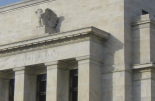Harry Geels: Eight blessings of higher interest rates

This column was originally written in Dutch. This is an English translation.
By Harry Geels
Economist Campbell Harvey recently wrote an alarming and much-liked post about the seven risks of rapidly rising interest rates. But according to the principle 'every disadvantage has its advantage', there are also seven upsides. Moreover, there is an additional eighth advantage of the now considerably higher interest rate.
When Campbell Harvey, Professor at Duke University, Partner of Research Affiliates and Advisor at Man Group, recently shared seven concerns on social media about the sharp increase in interest rates, he received many likes and comments. His main concern is that interest payments on the US government debt are likely to become the US government's second largest expenditure item as early as next year. But no matter how alarming his post is, there are also just as many upsides. Let's list the seven points.
1) Sharply rising public interest costs
According to Campbell, the net debt of the US government (after excluding agency debt and debt purchased by the Fed, 'because that is considered public') is $22 trillion, which is 69.4% of the US GDP. At an average interest rate of 2.8%, the effective interest payments amount to approximately $620 billion. Historically, Campbell argues, it is not good for an economy when the government spends so much money on interest.
The upside: Of course, Campbell is right that it's a shame to pay so much in interest, especially if those interest payments go to foreign investors of U.S. government bonds. However, this monster amount of interest payments also sends a signal, namely that the government must finally cut back and cut back. There will be major, actually healthy tensions when a vote is soon held on whether to raise the American debt ceiling again.
2) Increased instability of the financial sector
Campbell states that the sharp rise in interest rates is hitting investments on the asset side of the bank's balance sheet hard, because most banks are 'stuck in long loans and government bonds'. Bank balance sheets are now suffering from a 'duration mismatch'.
The positive side is that banks benefit in the longer term from higher interest rates and an upward sloping yield curve. It generates more operational income. It is now all hands on deck from a balance sheet perspective, but soon a more positive business environment will emerge for the banks.
3) Credit squeeze
Because banks now have balance sheet problems, they pay low interest rates to savers, which, especially in the US, but also increasingly in Europe, drives wealthy people to money markets and bond markets, which squeezes liquidity out of the system. This in turn leads to less economic growth.
The positive side is that lower economic growth is not so bad at the moment. After all, that slows down inflation. And the labor markets and the environment are overloaded because interest rates that are too low have inflated economic growth too much.
4) Declining investments
Campbell argues that higher capital costs lead to lower investment, which in turn is an important driver of GDP. That is correct and investments are indeed necessary, among other things to achieve a safer, better educated, healthier and more environmentally friendly society. The positive side is that, due to interest rates that were far too low until recently, too many investments have been made in pointless projects and a zombie economy has emerged of companies that actually only survive because they (still) pay little interest. They will now disappear.
Campbell of course has a point, namely that investments, even the necessary ones such as in the context of the energy transition, can collapse. That is why the government must do everything it can not to tax capital (growth) additionally. Otherwise, investments will face a 'double whammy': higher interest and additional taxes. Unfortunately, we have ended up in a society in which almost everyone is crying out for higher taxes on capital (growth). The timing of this is downright wrong given the increased interest rates.
5) Downward pressure on consumption
Campbell's fifth concern concerns the additional interest costs that consumers incur in the form of mortgages, consumer (credit card) loans, lease amounts, etc. In the US, this is also accompanied by the exhaustion of the extra COVID funds that consumers have received.
The positive side is that consumers have been able to live on cash for years due to the low interest rates. That account must be settled at some point. Consumers must learn again that 'borrowing money really costs money'
6) Pressure on commercial real estate
Just like consumers, real estate investors are now also suffering (and therefore also companies and banks that have a lot of real estate in their portfolio). Commercial real estate vacancy rates in San Francisco and Chicago are 32% and 20%, respectively.
The same positive side actually applies here. The real estate market has lived beyond its means for years with low interest rates. With the higher interest rates we can now cure this. But then the government should not also come up with all kinds of rules and burdens, which is unfortunately happening now.
7) Pressure on student debt
In the US, the interest and repayment free periods for student debt are ending. Something similar now also applies to the Netherlands, where the interest on student loans is being increased (from the current 0.5% to roughly 2.5%).
The positive side? Here too, many students have lived and speculated freely (in cryptos and 'meme stocks') thanks to far too cheap credit. That time is over. Some of the students are unlucky: never had a grant and borrowed a lot of money because it was necessary. There really needs to be a solution for them.
8) Good for pensions
There is an additional benefit of the higher interest rates. The funding ratios of pension funds that work with DB schemes have improved enormously and that provides relief for pensioners (there are fewer of them in the US, which is why Campbell probably does not mention this). The time of free money - and the associated useless investments, irresponsible risk-seeking behavior ('powered by the central banks') and unfair 'wealth transfers' (from savers and pensioners to investors) is over. 'Back to normal'.
Interesting times are ahead for investors due to the sharp rise in interest rates. Bonds are becoming attractive again and in equities we are likely to see a separation in performance between companies with stable and unstable cash flows, companies with little and a lot of debt and companies with few and many employees.
This article contains a personal opinion from Harry Geels








